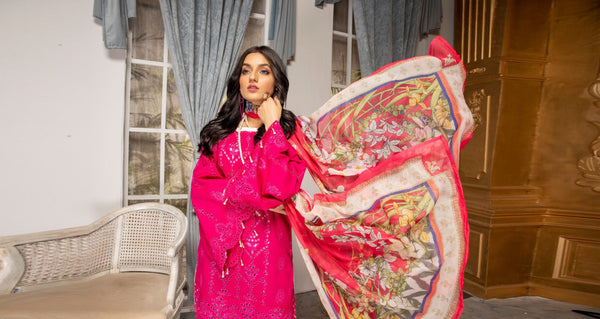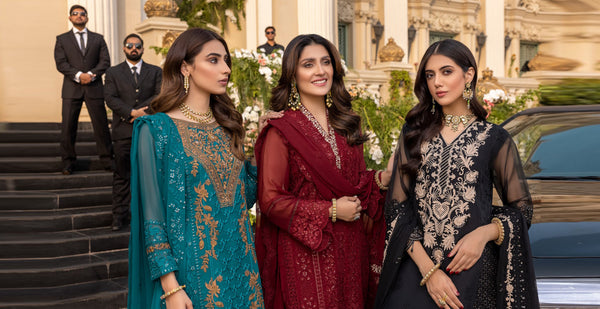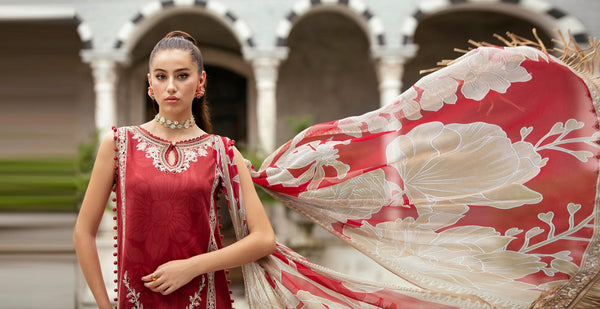A Guide to Indian Ethnic Wear and Classic Fashion Styles
Indian ethnic wear blends centuries-old tradition with modern style sensibilities. Whether you’re preparing for a festive occasion, a wedding, or simply want to embrace cultural roots with everyday elegance, understanding the basics of traditional Indian clothing and how to style it is key. In this guide we’ll explore different garments, materials, regional variations, how to choose the right outfit for your body type and occasion, and tips on styling and accessorising so that you feel confident in your ethnic wear.
1. The Basics of Indian Ethnic Wear
Indian ethnic wear refers broadly to garments rooted in Indian cultural heritage and traditional dress. For women this may include sarees, salwar kameez, lehengas, anarkalis; for men it may include kurta-pajamas, sherwanis, dhotis, bandhgalas. These styles often incorporate vibrant colours, intricate embroidery, traditional fabrics like silk, cotton, chiffon, and decorative elements such as zari, sequins or beadwork.
Here are some of the common items of clothing:
- Saree – a single length of fabric (typically 5–9 yards) draped elegantly around the body.
- Salwar Kameez / Anarkali – a tunic (kameez) paired with trousers (salwar) and often a dupatta (scarf).
- Lehenga Choli – a flared skirt (lehenga) paired with a fitted blouse (choli) and often a dupatta.
- Kurta-Pajama / Dhoti / Sherwani – traditional men’s wear where a long tunic (kurta) is worn with pajama-style trousers or dhoti, or in formal occasions a sherwani jacket.
Understanding these basics helps you recognise styles, pick what fits your occasion, and feel confident in combining tradition with modern accents.

Overview of Indian Ethnic Wear Styles
2. Popular Fabrics, Embroidery & Regional Variations
The fabric and embroidery define not only the look but also the comfort and suitability of the outfit. India’s rich textile tradition means each region has characteristic styles — knowing these helps you choose something that is both authentic and comfortable.
Fabrics – Silk (Banarasi, Kanjeevaram), Cotton (Chanderi, Kota), Georgette, Chiffon, Velvet (for heavy outfits) are commonly used. Silk gives a luxurious fall and is suitable for weddings; cotton and blends are better for everyday wear or hot weather.
Embroidery & Decoration – Zari (metallic thread work), Mirror work (Gujarati), Resham (silk thread), Kantha (Bengal), Zardozi (heavy metallic embroidery) – the heavier the work, the more formal the outfit.
Regional Variations – For example:
- In Gujarat/Rajasthan: bright bandhani (tie-dye) sarees, mirror embroidery and lehengas with heavy mirror work.
- In Bengal: light cotton sarees like tant and jamdani, white sarees with red border for festive wear.
- In South India: Kanjeevaram and Mysore silks with broad gold borders.
- In Punjab/Haryana: Phulkari embroidery on salwar kameez, vibrant dupattas.
By selecting fabric and style suitable for your climate, occasion and personal preference, you’ll enjoy wearing the outfit rather than just *enduring* it.

Traditional Indian Fabrics & Embroidery
3. Choosing the Right Ethnic Wear for Occasion & Body Type
An important factor in looking good and feeling comfortable is choosing the right outfit for the occasion and your body type. Here’s how to decide:
By Occasion:
| Occasion | Recommended Outfit | Why It Works |
|---|---|---|
| Festival / Prayer Gathering | Simple cotton or light silk saree or salwar-kameez with minimal embroidery. | Comfortable to wear for longer, respectful in mood. |
| Wedding / Reception | Heavy silk saree (Kanjeevaram) or lehenga with rich embroidery; men: sherwani or bandhagala. | Formal, grand, requires heavier fabrics and decorative work. |
| Casual / Office / Daily Wear | Lightweight cotton kurti with palazzo or churidar, or simple saree with unembellished fabric. | Practical, comfortable, stylish without being overdone. |
By Body Type:
- Petite height (e.g., 5’1″ like you!) – Choose well-fitted silhouettes, vertical lines in prints, smaller motifs. If wearing a saree, a narrower border can help elongate. Avoid overly heavy flares or bulky layers.
- Curvier figure – A-line lehengas or anarkalis that flare out from under the bust, high-waist salwars, or sarees draped with pleats neatly tucked to avoid bulk at the waist. Darker colours can be slimming.
- Taller frame – You can carry broader borders, heavy embroidery, longer hems comfortably. Choose outfits that balance height by avoiding overly short tops or short saris.
By matching your body type and occasion with the right style, you’ll both look and feel your best.

Ethnic Wear Body Type Guide
4. Colour, Prints & Styling Tips for Indian Ethnic Wear
Colour and print selection play a huge part in how the outfit appears and how you feel wearing it. Here are some styling tips:
Colour Choice:
- For daytime and casual wear: lighter, pastel tones (mint green, dusty pink, soft yellow) work beautifully.
- For evening, formal or festive wear: go for jewel tones like emerald, ruby, navy, deep purple or classic red. Gold or silver embellishment adds shine.
- Coordinate rather than match exactly – your blouse or dupatta can pick up a contrasting accent colour from the main outfit for interest.
Prints & Patterns:
- Smaller, repetitive prints (paisley, floral) help convert the eye easily and suit everyday use.
- Larger motifs or bold prints are best for statement pieces – use sparingly or on one part (like the lehenga skirt) to avoid overwhelming the look.
- When mixing prints (for example, a printed saree with a contrasting blouse or a dupatta), ensure one print is dominant and the other subtle to avoid clashing.
Styling Tips:
- Add a statement accessory – for example, traditional jhumkas (earrings) or a chunky bangle set can elevate simpler outfits.
- Footwear matters – heels or wedges help with saree drapes especially if you’re petite; flats or low heels suit churidar/salwar sets for comfort.
- Dupatta drape style can change the look – across one shoulder for formal, subtle wrap for casual, half-saree drape for fusion.
- Don’t forget tailoring – a well-fitted blouse, properly pleated saree or well-fitted kurti makes a big difference.

Colour & Print Styling Tips
5. Accessorising & Modern Fusion Trends
Accessorising brings your outfit together and fusion trends allow you to modernise ethnic wear without losing its traditional essence.
Accessories:
- Jewellery: In traditional settings choose gold or Kundan sets for silk sarees or lehengas. For lighter ensembles go for oxidised silver or minimalist pieces. A maang tikka or passa can add elegance to bridal looks.
- Footwear: Mojaris or juttis for authenticity, heels or wedges for glam, sandals for comfort. Colour coordination with the outfit helps.
- Handbags/clutches: A potli (drawstring bag) or embellished clutch is perfect for ethnic wear; for modern fusion, a sleek metallic clutch works.
- Hairstyle & Makeup: Loose waves or a low bun with gajra (flower garland) suit sarees; braided fishtail or side-bun work well with salwar suits. For makeup: accentuate one feature (bold lips or smoky eyes) and keep others balanced.
Modern Fusion Trends:
- Saree with a crop-top blouse or a pre-stitched “ready-to-drape” saree for convenience.
- Lehenga skirt paired with a contemporary shirt or jacket for a mix of ethnic and western.
- Culottes or palazzo pants with shorter ethnic tunics for a daily-wear fusion look.
- Men’s fusion: Kurta with denim jacket, or sherwani jacket styled over western trousers for an Indo-western vibe.
Fusion gives you the freedom to wear ethnic styles even in casual or semi-formal environments and keeps your wardrobe versatile.

Accessories & Modern Fusion Styling
6. Budgeting, Care & Sustainability
When embracing ethnic wear, it’s smart to also think about cost, garment care and sustainability so that your investment lasts and you dress responsibly.
Budgeting Tips:
- For heavy events (like weddings), allocate more budget for fabric quality & embroidery as it shows and lasts longer.
- For casual or frequent wear, opt for lighter fabrics and minimal embellishment to avoid high maintenance costs.
- Shop out-of-season for discounts or explore rental services for high-end outfit wear just once.
Care & Maintenance:
- Read garment labels. Silks and embellished outfits often require dry cleaning.
- Store garments properly – hang sarees flat if possible, keep them in muslin/plastic covers, avoid heavy folds for long-term storage.
- Spot-clean minor stains immediately to avoid spread; for heavy garments turn inside out when storing.
Sustainability:
- Choose natural fibres like cotton, linen, silk or blends rather than heavy synthetics when possible.
- Support artisans/local makers who practise traditional handwork and textiles. By buying from them you help preserve craft heritage.
- Recycle or up-cycle older outfits – for example, convert a saree into a dress or skirt, or reuse a lehenga skirt as a cocktail skirt by pairing with a modern top.

Budget, Care & Sustainability Tips
7. Final Thoughts: Confidence & Personal Style
At the end of the day, the best outfit is the one you feel comfortable and confident in. Ethnic wear is not just about tradition; it’s an expression of culture, identity and personal style. Whether you stick to classic silhouettes or explore fusion, what matters is that you wear it with poise.
Here are a few final reminders:
- Choose an outfit you can move in and feel at ease wearing.
- Don’t follow all trends — pick what suits your taste and body type.
- Keep the accessories balanced — heavy outfits often need simpler jewellery and vice-versa.
- Let your outfit reflect your personality — whether elegant and understated or bold and festive.
By combining the knowledge from the sections above — fabric & region, body type & occasion, colour & print, accessory & fusion, care & budget — you’ll build a versatile and beautiful ethnic wardrobe. And as you wear these pieces, you carry with you tradition, elegance and your unique style.
Happy styling!






